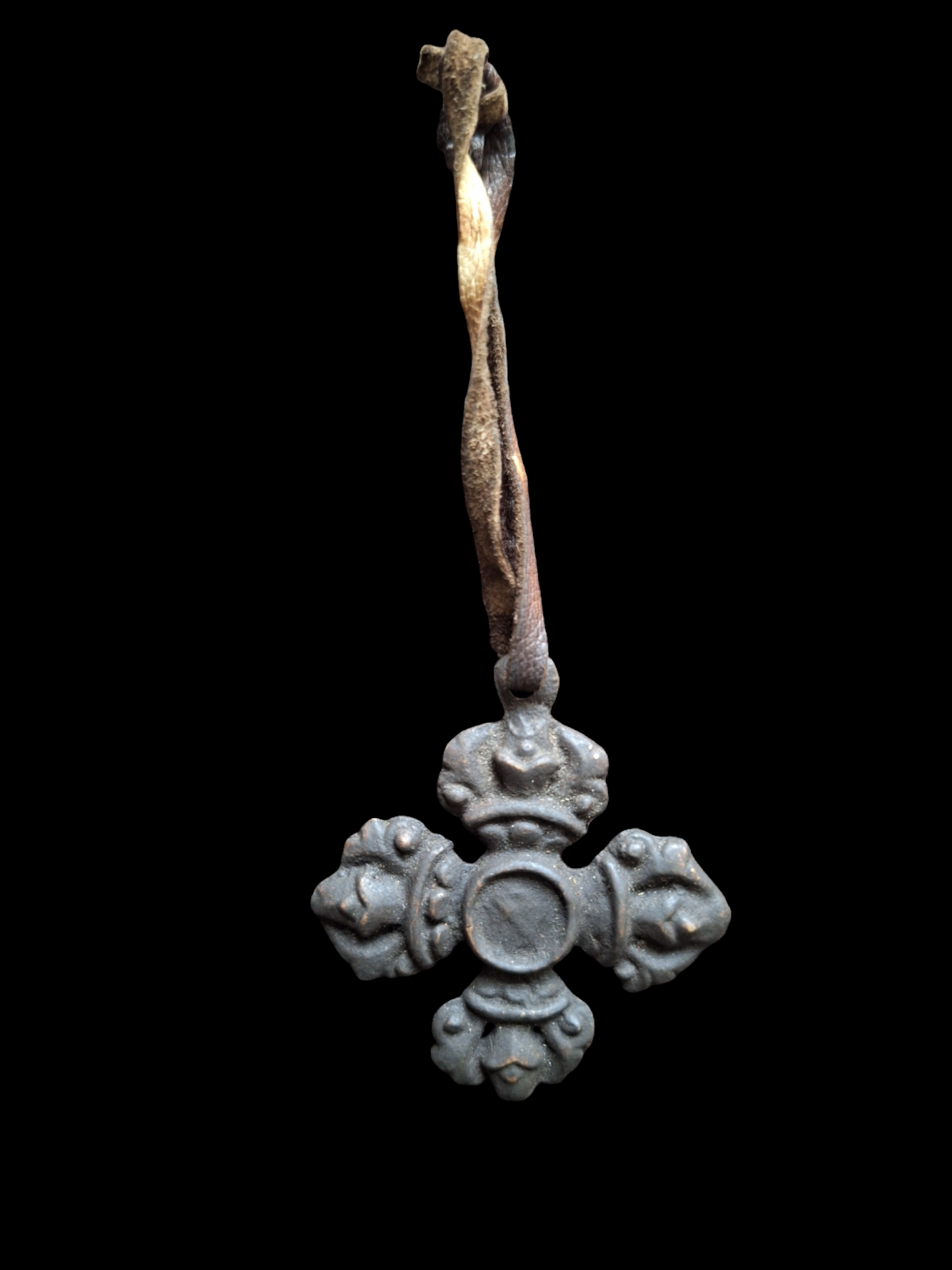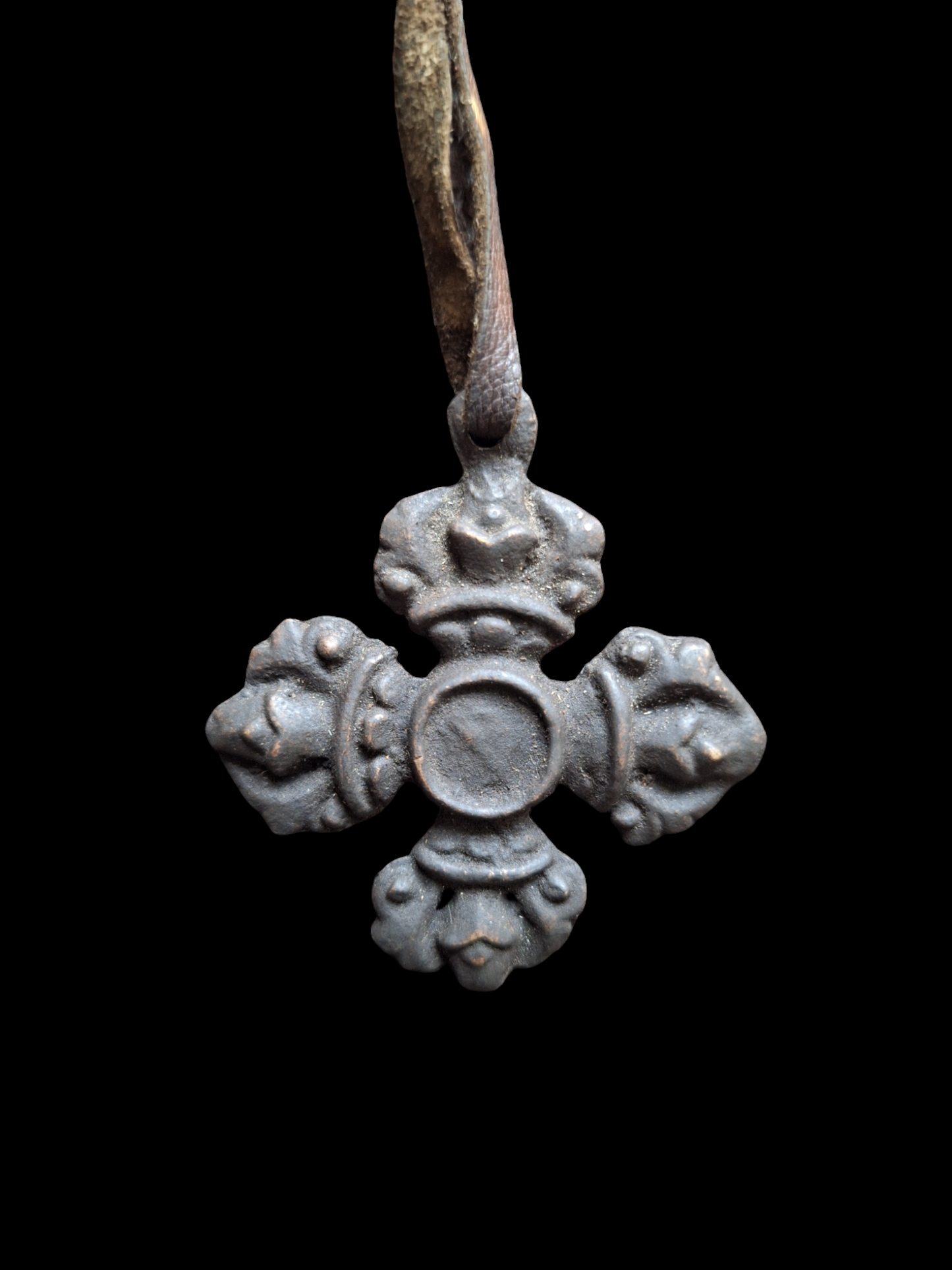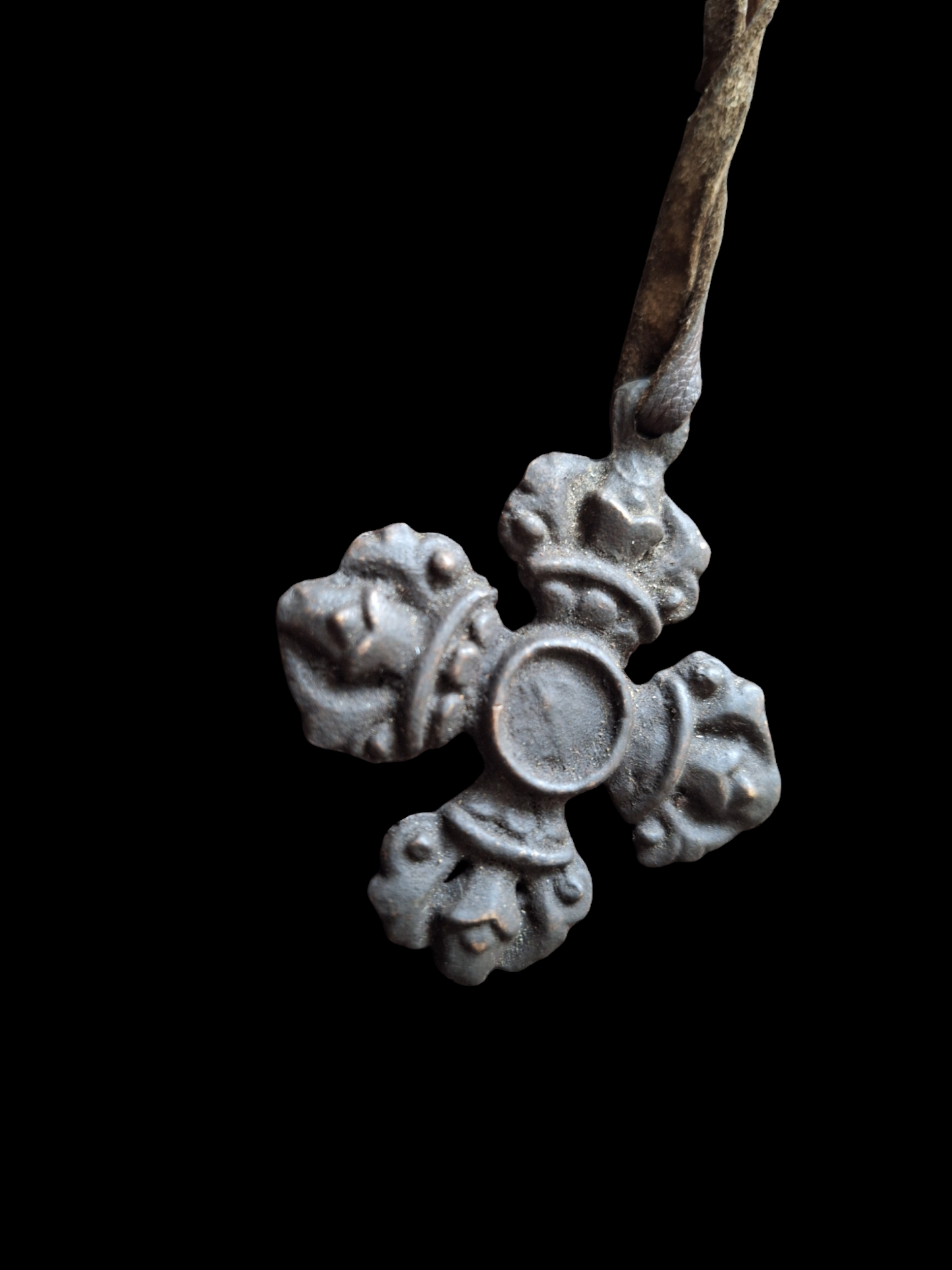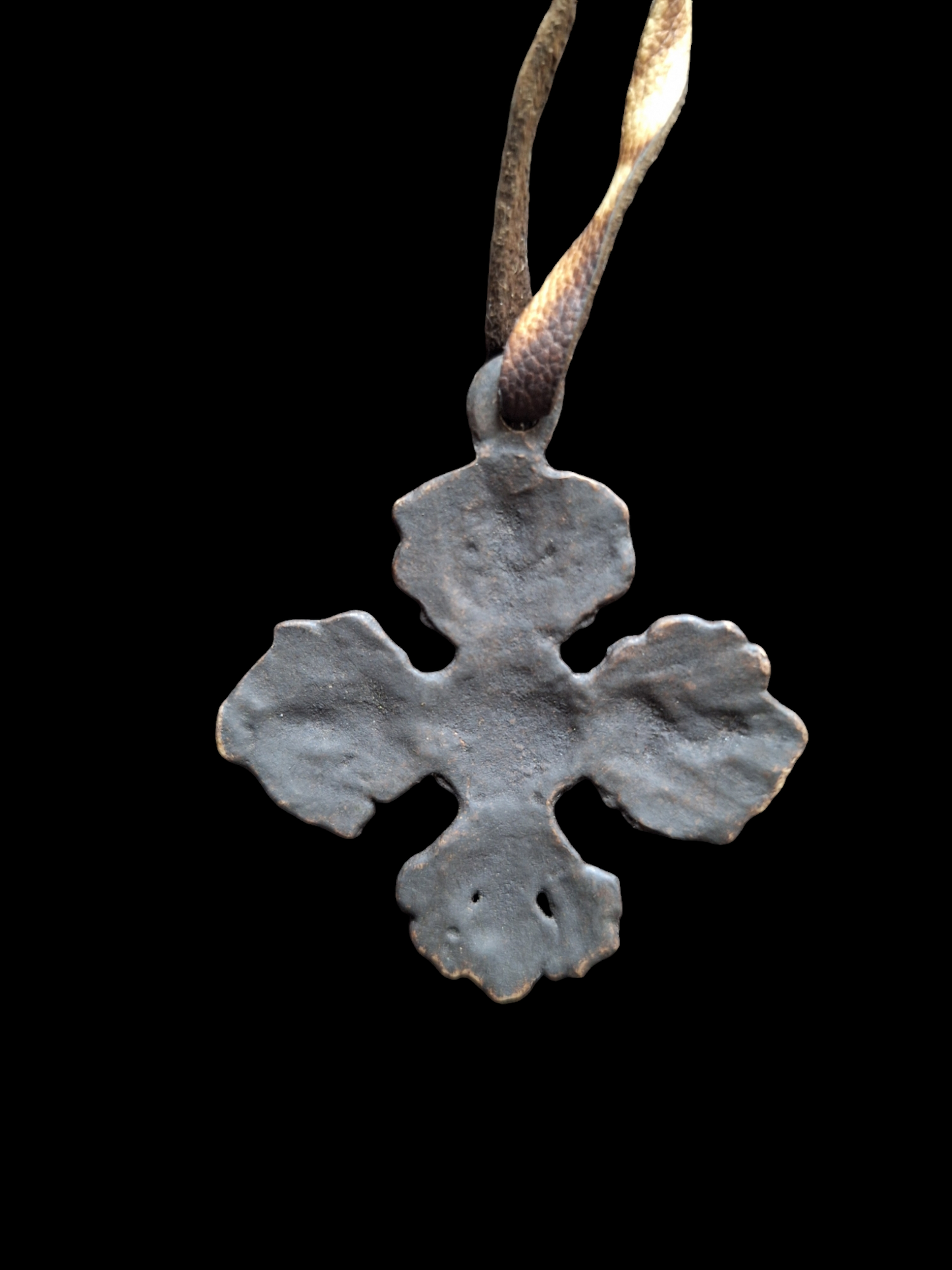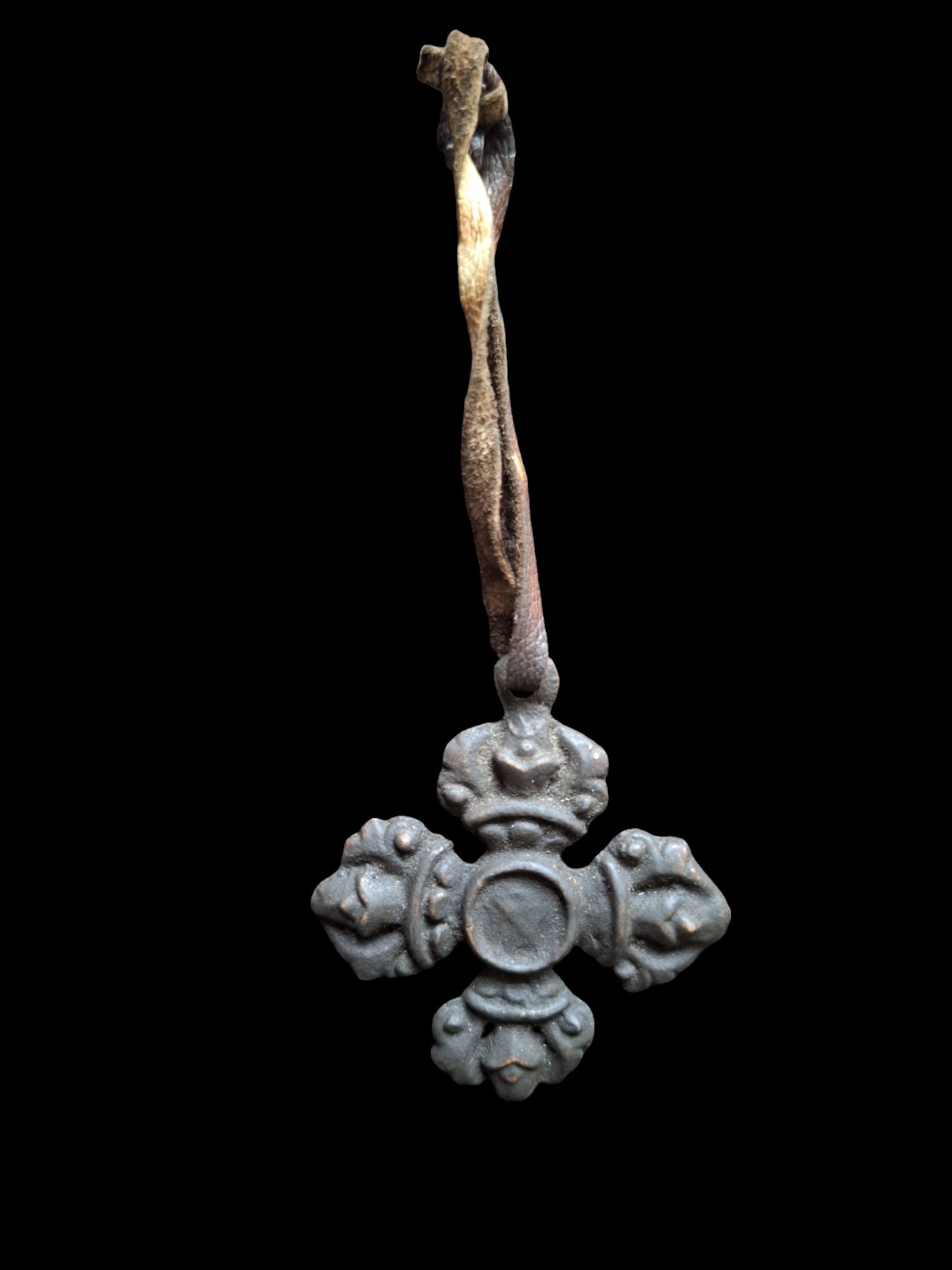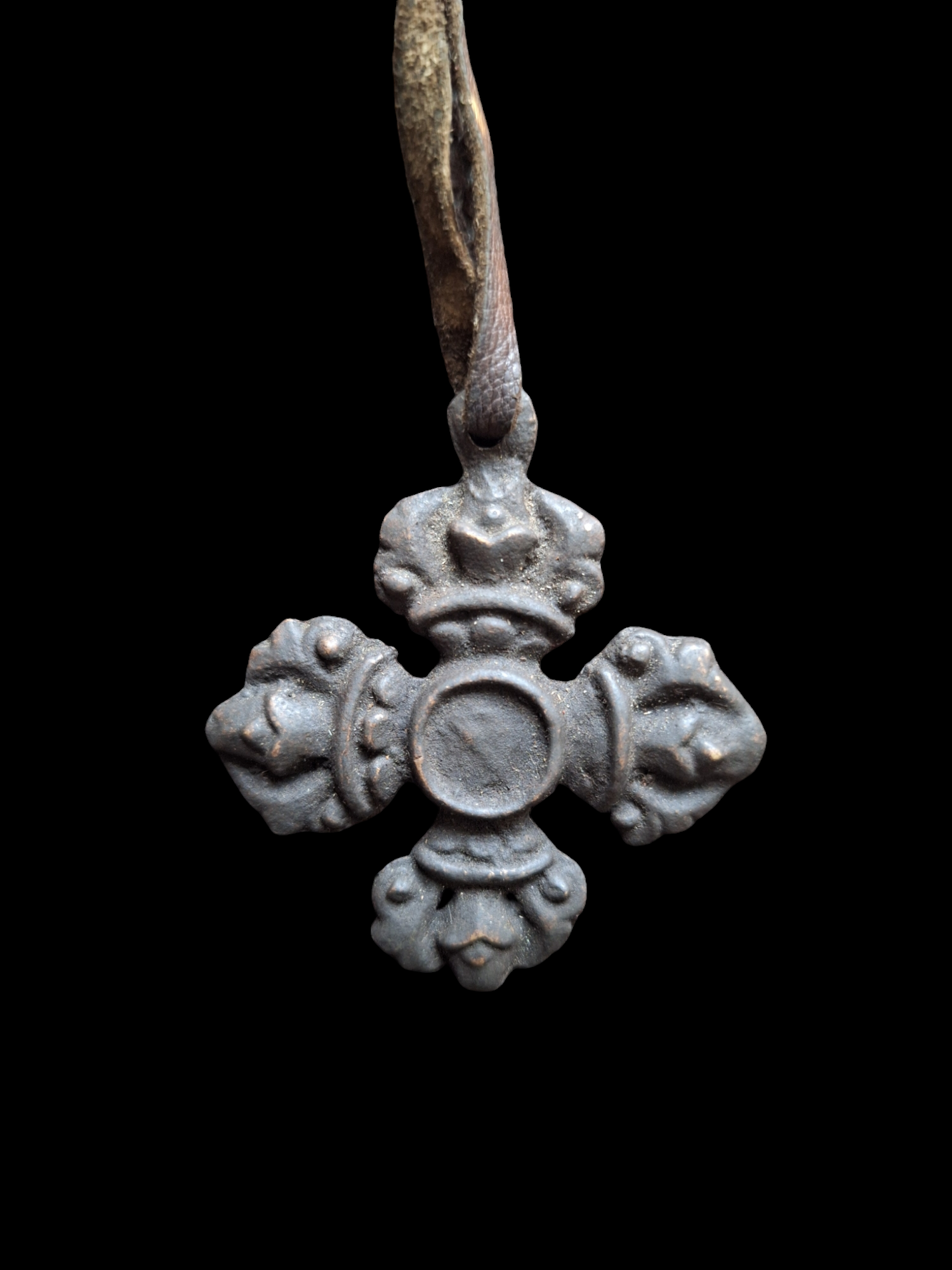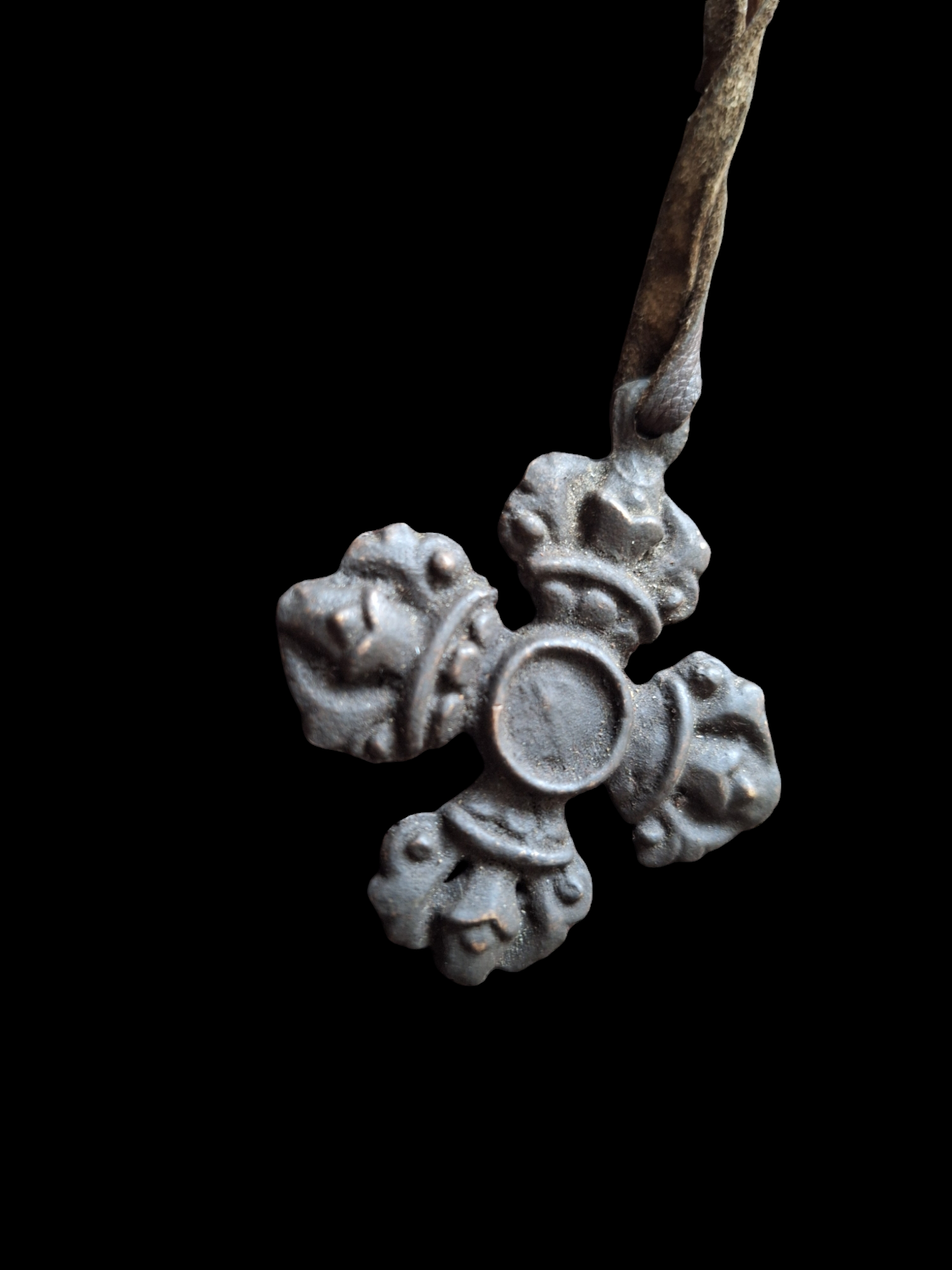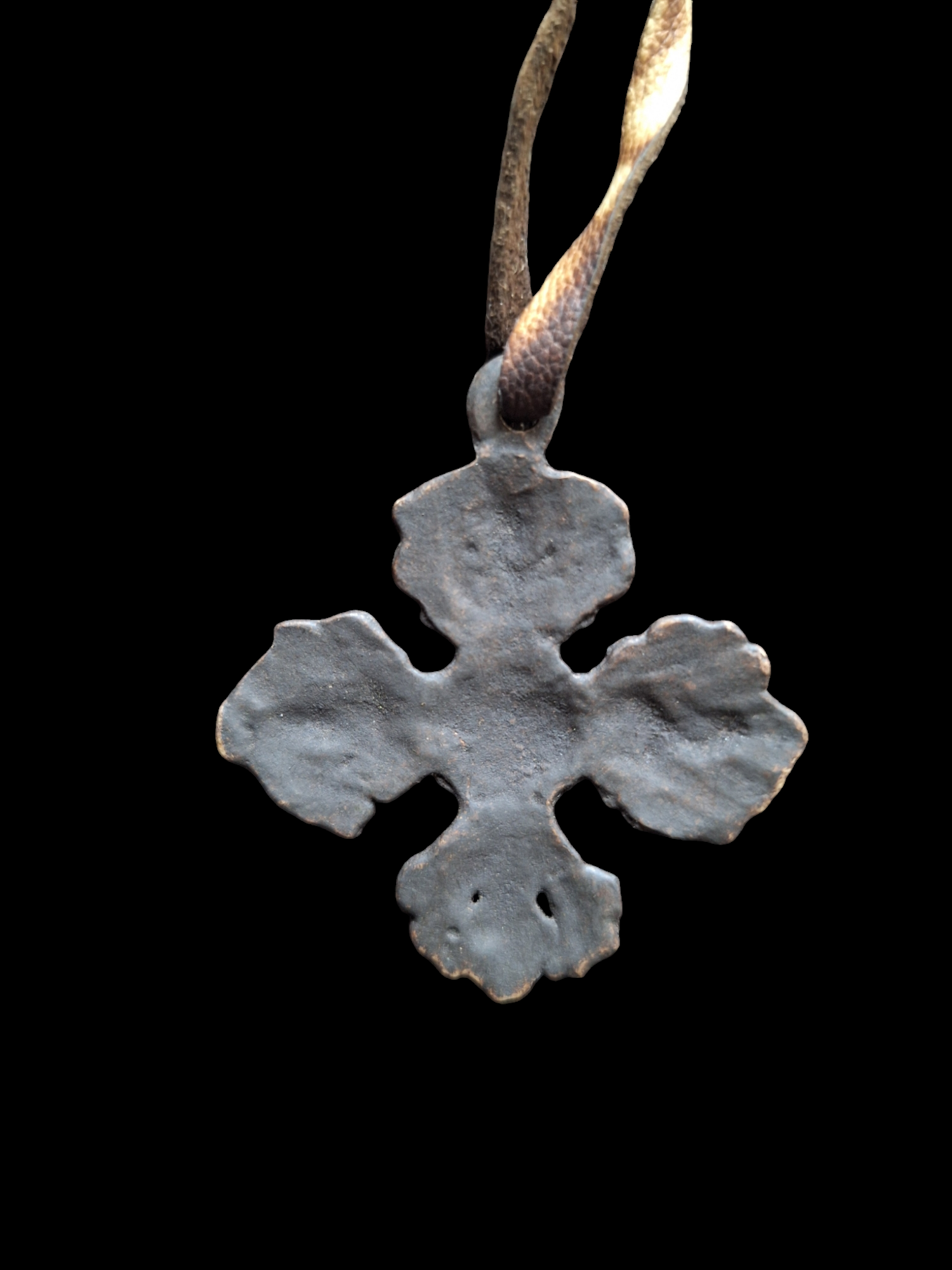Seawolf Shop
Antique bronze thogchag pendant Double Dorje #2
Antique bronze thogchag pendant Double Dorje #2
Couldn't load pickup availability
Share
The word 'dorje' (or in Sanskrit 'vajra') translates both as 'lightning bolt' and as 'diamond'. It is a widespread symbol in both buddhism and hinduism, and can be found on for example depictions and statues of the buddha, decorations on ritual attributes, furniture and fabrics.
The dorje symbolizes the true nature of the universe and reality; the endless, ultimate emptiness in which all possibilities exist. The dorje (as a visual symbol and/or physical attribute) is often used during meditation practices, to support in 'cutting through the crap of the mind', finding a clear path through the diversions of the 'monkey-mind' and ego-chatter, seeing what's real and what's not. The dorje is said to destroy all kinds of ignorance and in this way helps in gaining true insights.
This pendant shows a 'double dorje' or 'crossed dorje'; from the central hub there are dorje-heads going into all four cardinal directions. This symbolizes the principle of absolute stability, of finding solid ground in the middle of the universe. It is said that a vast crossed dorje underlies Mount Meru, the esoteric mountain in Hindu and Buddhist cosmology that is considered to be the centre of all universes. Thus the double dorje supports the entire physical universe. Also a double dorje is often depicted as the central hub of intricate mandala representations, such as in thangka’s, where it forms the immoveable support or foundation of the mandala palace.
This bronze pendant is made to resemble an ancient 'thogchag' (or 'thokcha'). Thogchags are small metal objects, worn as amulets. Their history can be dated back thousands of years and the real thogchags are said to be made of meteorite iron (or at least a metal alloy which also includes meteorite iron) and have fallen from the sky or magically produced when a thunderbolt strikes the earth.
Thogchags can be made in several forms and often depict tantric deities, mythological or real animals or ancient symbols. Also ritual attributes such as phurba's or dorje's can often be found and even more daily, practical attributes such as arrowheads, fibulae and pieces of horse equipment. They often are very abstract in their depictions, which for really old pieces of course further increases by being worn out into smooth surfaces and gaining a distinct patina.
Real ancient thogchags are of course highly sought after and can be extremely expensive. So of course in more recent times also many 'new' thogchags are made, resembling the style and depictions of the old ones.
This pendant here in our shop is such a recently made thogchag, though the term 'recent' might not be completely adequate, because this pendant also has quite some years of age to it already. It might not be ancient, but certainly of some respectable age already and has gained a beautiful dark patina over time.
This pendant comes from Nepal. Size is approximately 55 millimeters high (measured including the eyelet) and 50 millimeters wide. Weight is approximately 22 grams.
Only one available.
